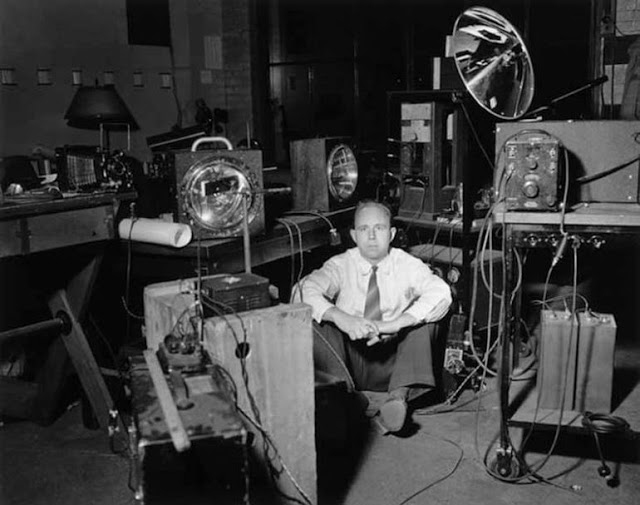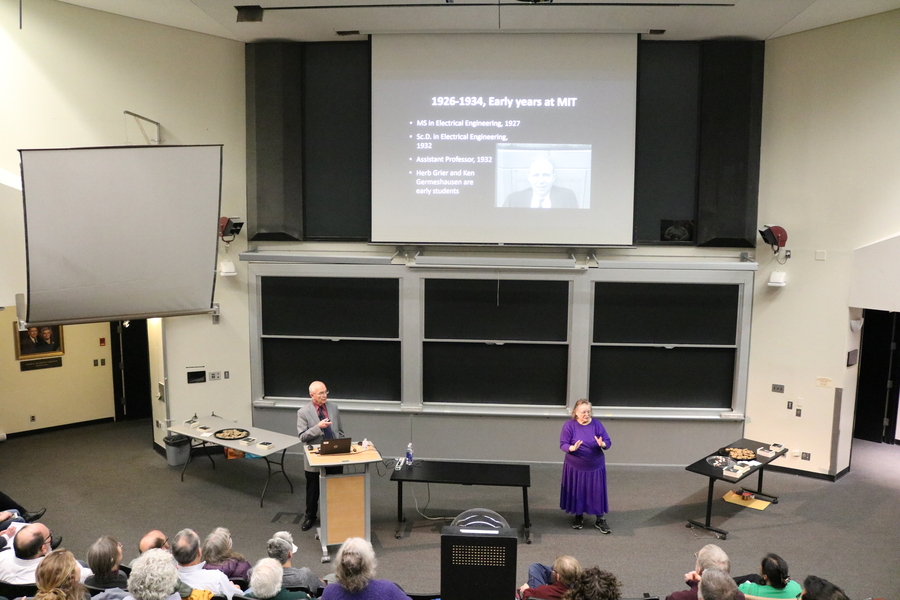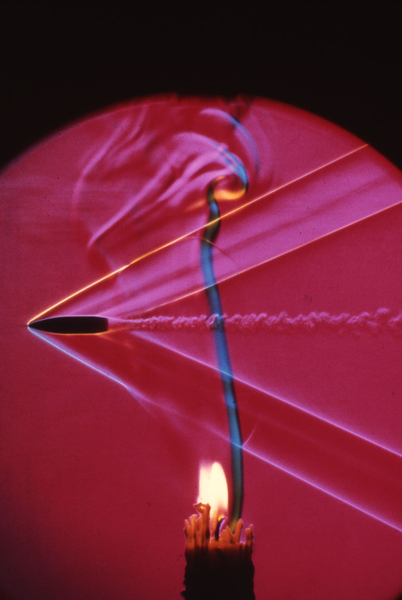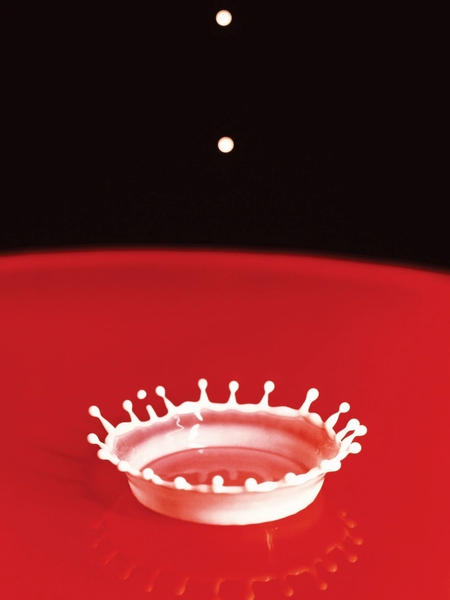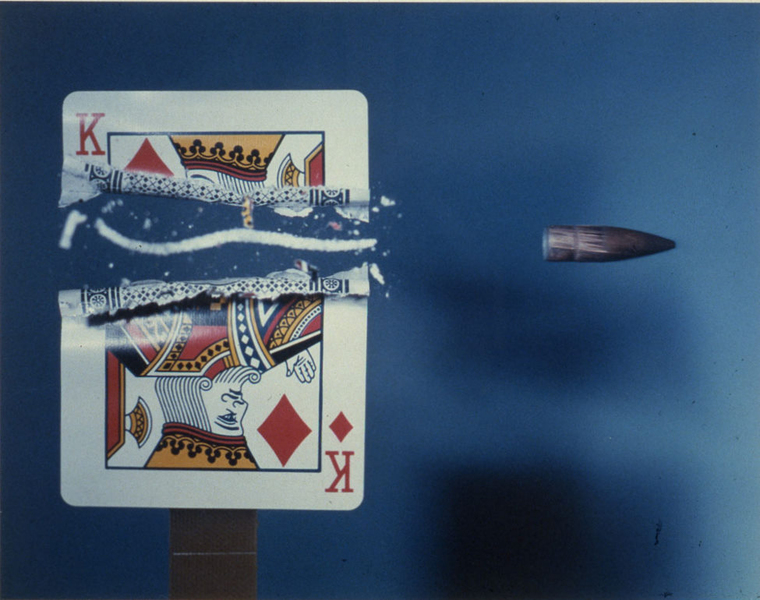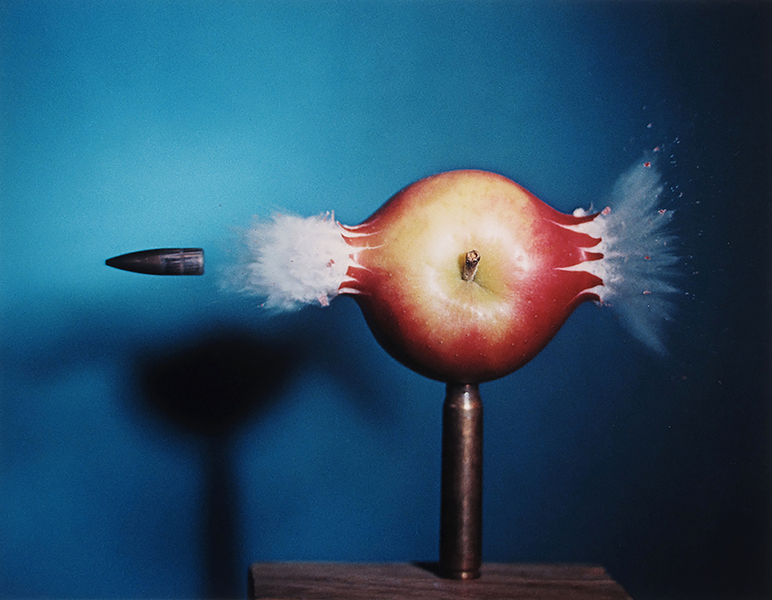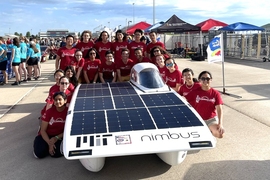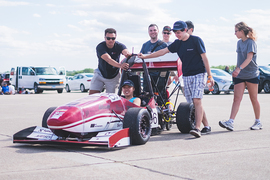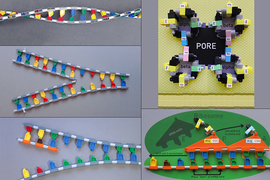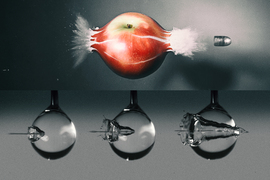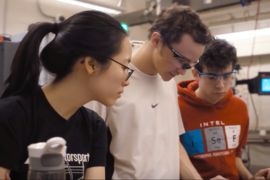A hummingbird mid-flight, a bullet piercing an apple, and a drop of milk forming a crown-like splash, are all images never seen by the human eye until the late MIT professor Harold “Doc” Edgerton captured them.
Having transformed the stroboscope from a laboratory instrument into an everyday device, he is considered the father of modern high-speed photography — affectionately known by his students and staff as “Doc,” and as “Papa Flash” by Jacques Cousteau and the crew of their vessel Calypso. Hundreds of Edgerton’s images and his fascinating notebooks are now on display via the Edgerton Digital Collections.
Last month, Edgerton Hall (Room 34-101) was filled with students and alumni to celebrate the work and legacy of the beloved MIT professor. People who worked closely with Edgerton, including Marty Klein '62 and Charlie Mazel SM '76, were in attendance. Over the course of the hour, Edgerton’s former teaching assistant and founding director of the MIT Edgerton Center, Professor J. Kim Vandiver SM '69, PhD '75, shared Edgerton’s legacy of photography, innovation, and mentorship.
Edgerton helped further many fields, from sports photography to side-scan sonar and marine archaeology to wartime night reconnaissance photography. He accompanied Jacques Cousteau on numerous marine expeditions and searched for shipwrecks both ancient and modern, and he developed 50,000 watt-second strobes used for nighttime aerial reconnaissance in support of the Normandy landings in June 1944.
Though Edgerton began his development of high-speed imaging technology for science and engineering purposes, many of his photos became acclaimed works of art and are found in collections around the world. He helped many students pursue their dreams, sometimes by simply supplying a workbench, tools, and a supportive atmosphere.
Vandiver told of his own high-speed, color schlieren photography project (a technique to photograph the flow of air around objects). With Edgerton’s support and mentorship, the photos Vandiver created captured vivid images of the hot air above a candle, ice cubes in water, and soap bubbles. These images also enjoyed wide circulation.
At MIT, Edgerton was known not just for his photography but for his generous spirit and love of learning. The MIT Edgerton Center, founded by Vandiver in 1992, continues Edgerton’s legacy by providing hands-on learning opportunities for the MIT community and beyond. In 1985, Edgerton helped James Worden ’89 launch the Solar Electric Vehicle Team — the first of its kind in the country. The Edgerton Center adopted the team shortly after its founding in 1992 and has since grown to house a dozen student-led engineering teams. A welcoming space to all, a hallmark of the Edgerton Center is the high number of women on engineering teams and in leadership positions.
Toward the end of his talk, Vandiver quoted his mentor on encouraging the next generation of students in the STEAM disciplines — a mantra that underlies the MIT center that now bears his name. "The trick to education is not to let them know when they are learning something until it is too late," Edgerton had said. Vandiver added: "Show them the fun first, and then the rest is history."
